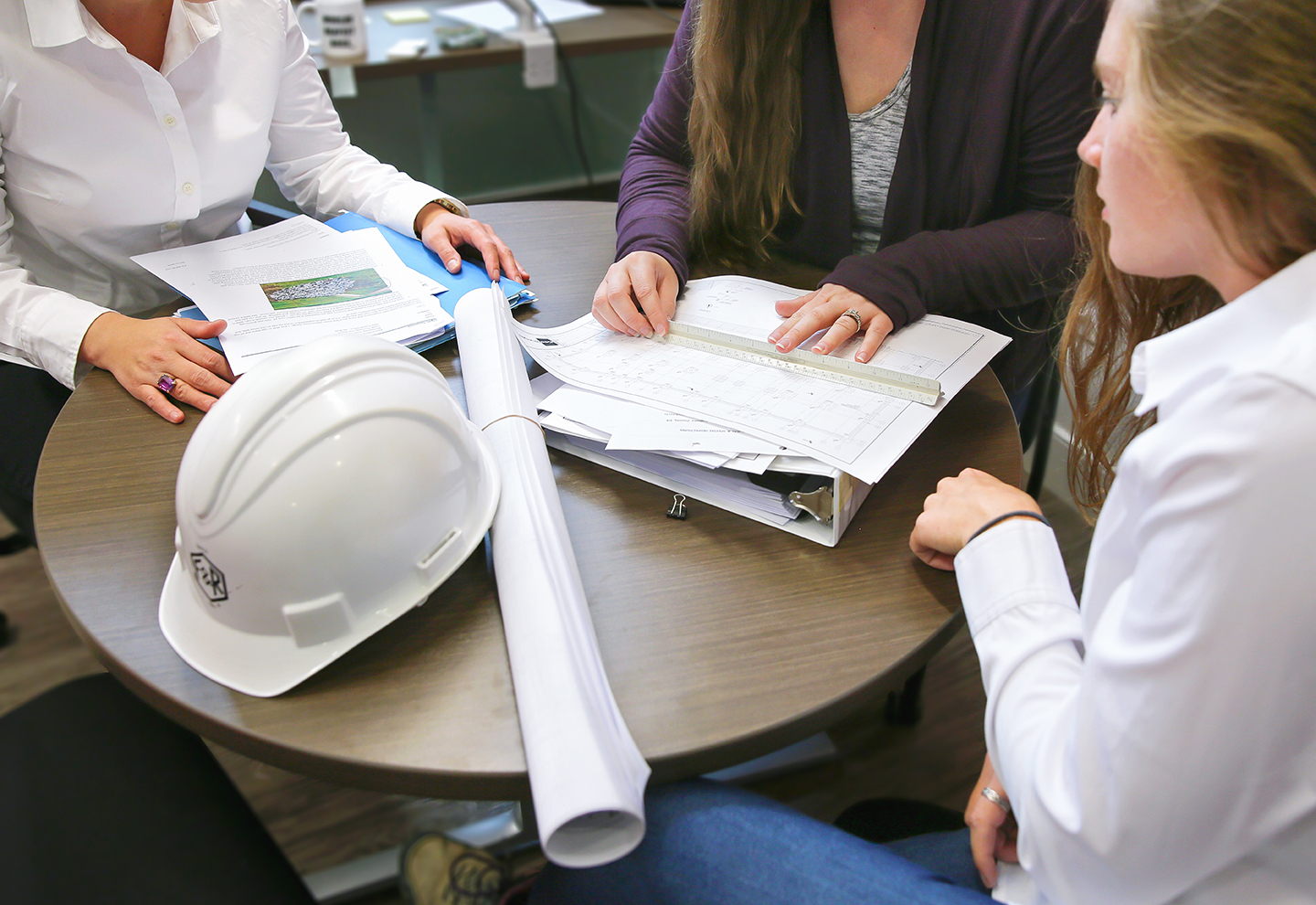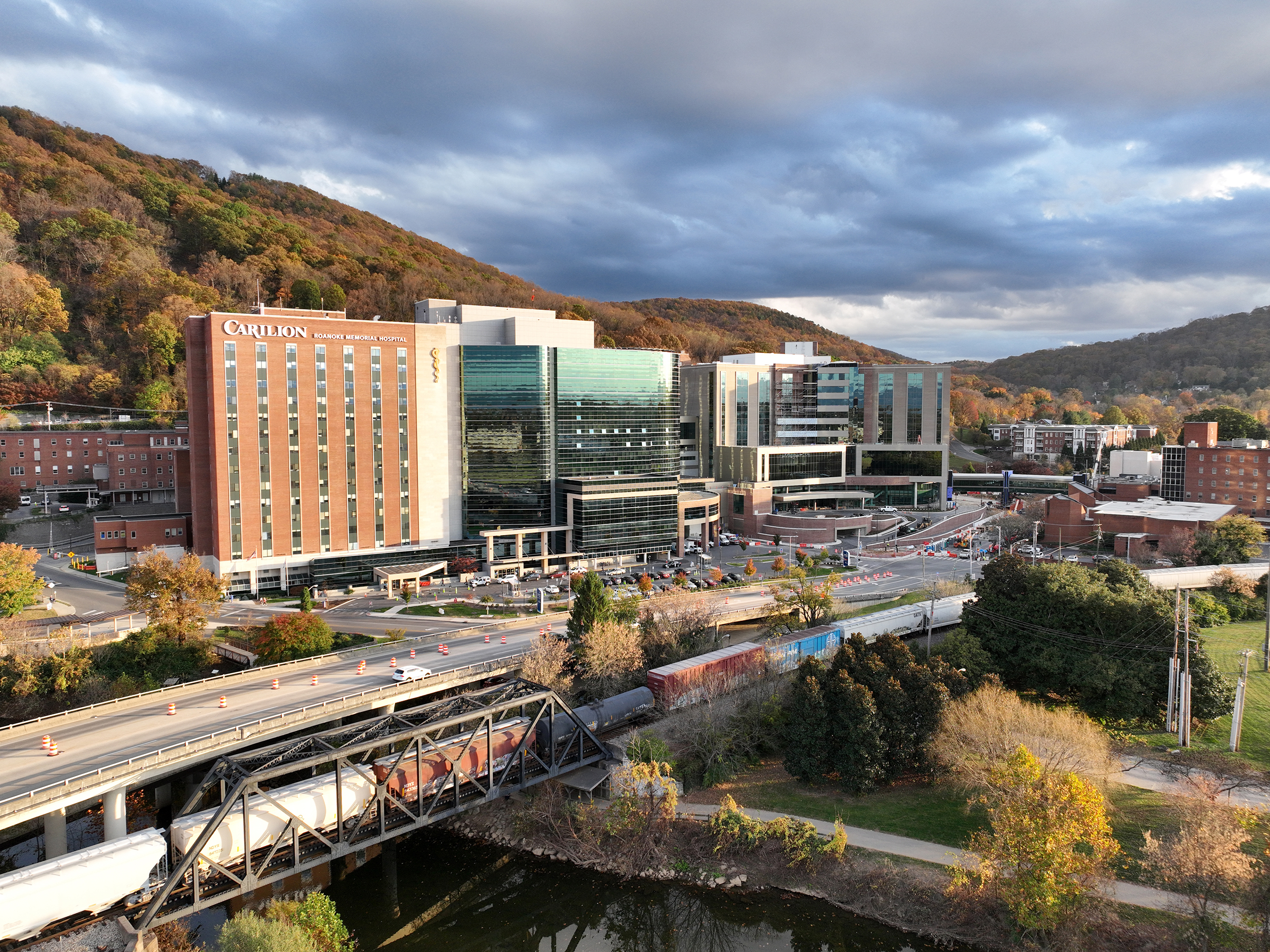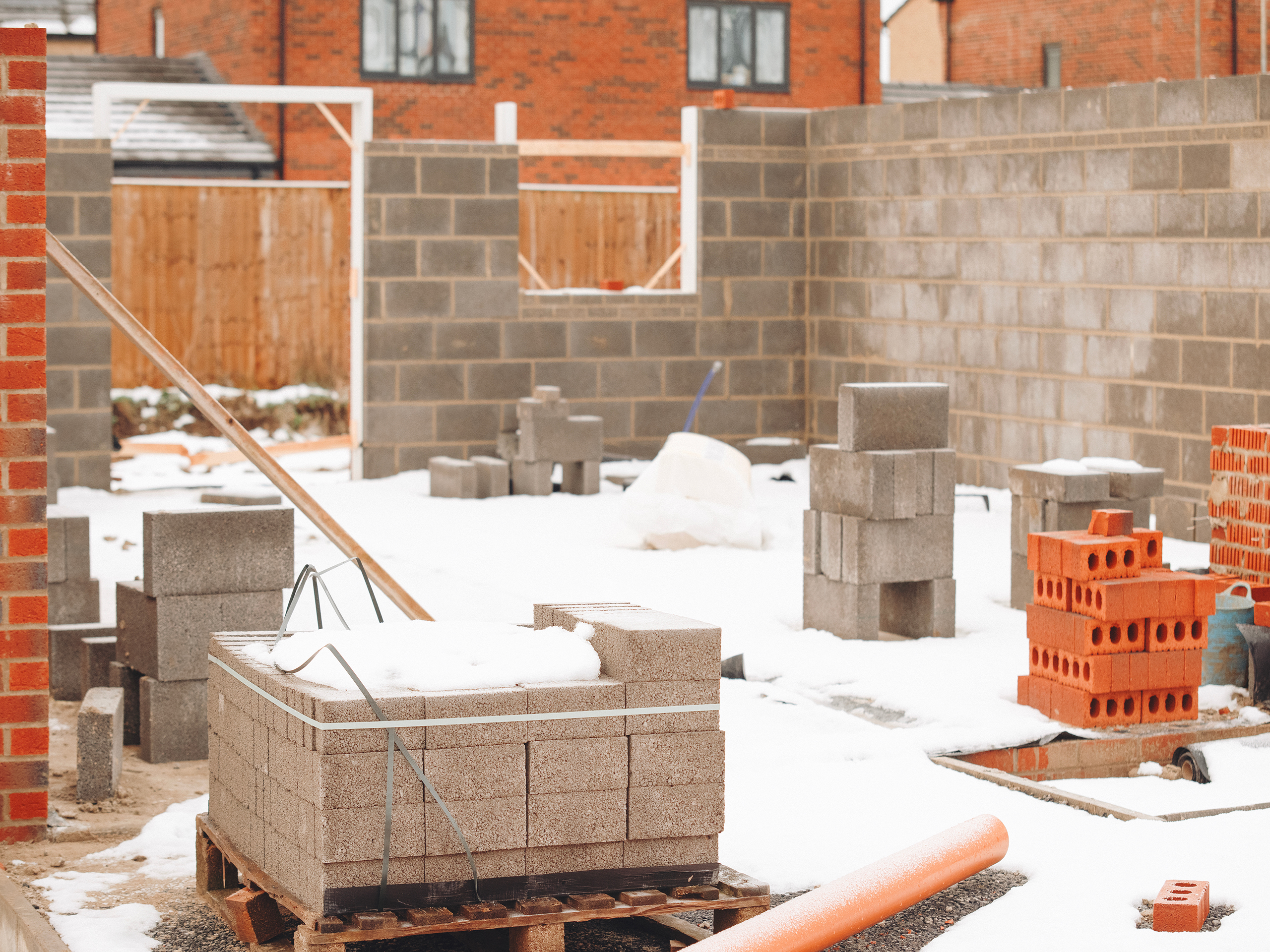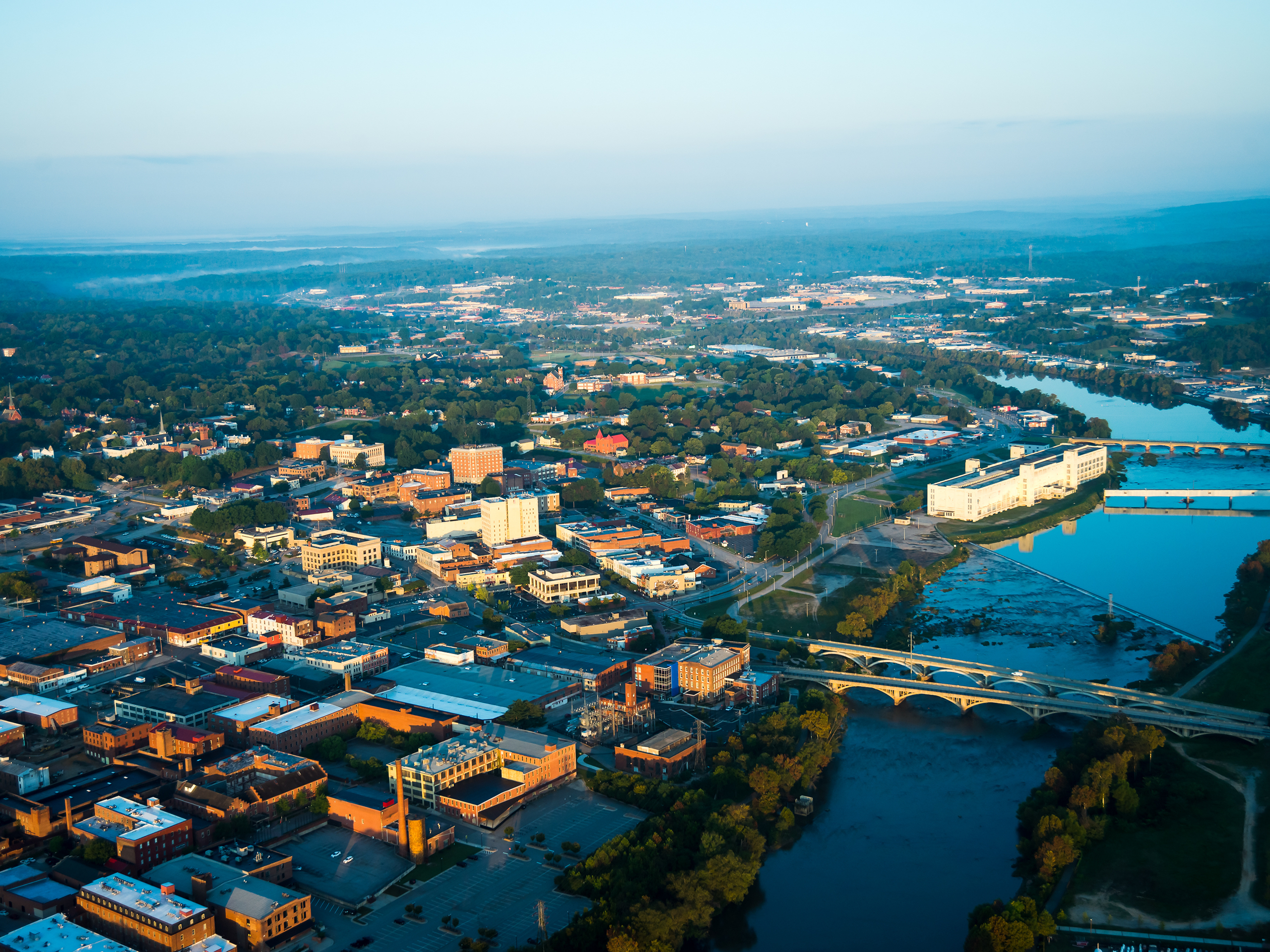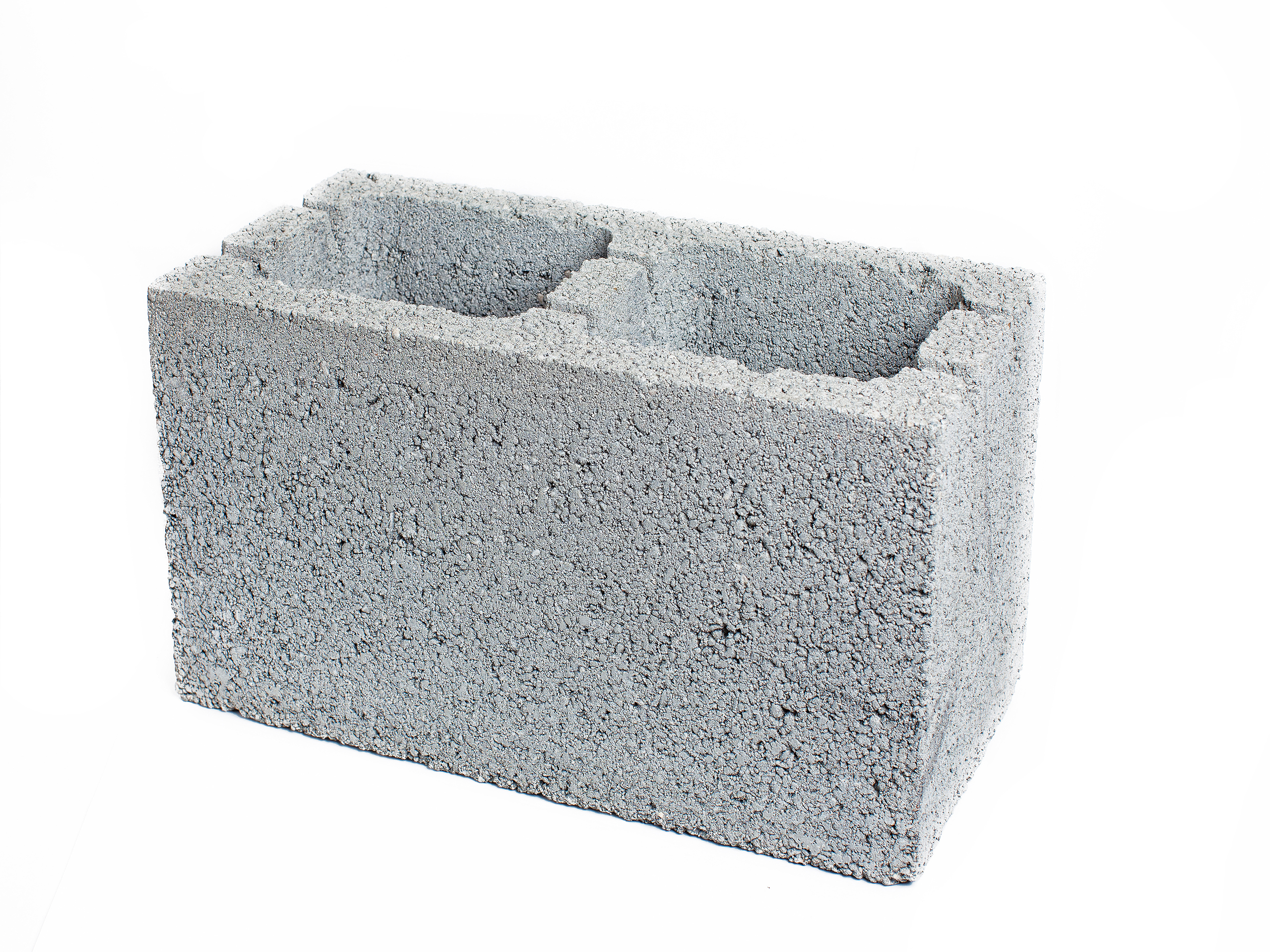The International Building Code (IBC) requires that every new construction project have a project-specific “Statement of Special Inspections” (SSI) prepared by the registered design professional (RDP) in responsible charge, as outlined in Section 1704.3 of the code. The IBC also requires that the SSI be filed with the building official before the issuance of the project building permit (IBC Section 1704.2.3). The content of the SSI is addressed in Section 1704.3.1 of the IBC, which stipulates that the SSI identifies the following:
- Materials, systems, components, and work required to have special inspections or tests by the building official or by the RDP responsible for each portion of the work.
- Type and extent of each special
- Type and extent of each
- Additional requirements for special inspections or tests for seismic or wind resistance as specified in Sections 1705.12, 1705.13, and 1705.14.
- For each type of special inspection, identification as to whether it will be a continuous special inspection, periodic special inspection, or performed in accordance with the notation used in the referenced standard where the inspections are identified.
The five provisions required by the IBC code for the SSI content, as stated above, are straightforward and are not specified in ambiguous language, as is often the case with building code verbiage. It is very rare, however, for any individual project SSI to accomplish the cumulative goal of the five provisions, which is to state all the required special inspections and tests specified by the code for the subject project. It is extremely difficult (practically impossible) for the RDP preparing the project SSI to include every special inspection and test required by all the various applicable model codes and standards pertinent to all the combined construction disciplines on the project.
Most code compliance criteria related to special inspections are listed in various referenced model codes and standards adopted by the IBC. However, they are not found between the covers of the IBC code book. There are dozens of adopted and referenced model codes and standards, as well as hundreds of ASTM standards, which provide numerous code compliance criteria, dimensional tolerances, and frequency of testing events. The depth and breadth of the code compliance search to determine the extent of special inspections and testing can, indeed, be overwhelming.
So, what is the answer to this problem? How do you go about drafting a “near-perfect” SSI so the building official, engineer, architect, contractor, special inspector, and owner are on the same page when construction commences? The code requires that (practically) every project has a project-specific SSI developed for it, so let’s endeavor to ensure that the SSI is accurate. The best approach is to consistently plan a project pre-construction meeting to explicitly review, modify, and discuss the project’s SSI in relation to the IBC code requirements, as stated in IBC Section 1704.3.1. All project team members, especially the project special inspectors, should attend this SSI pre- construction meeting. It is also essential that the building official representing the jurisdiction in which the project is located attend this meeting.
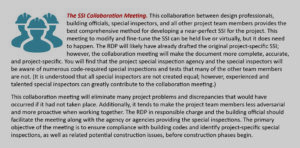
The following steps should be performed regarding project scope and code acceptance criteria related to project-specific special inspections:
- Review project plans and
- Review the statewide building code; many statewide codes take precedence over the IBC code when conflicts arise between the two.
- Discuss project specifics with the building official to understand their expectations regarding any local code amendments or interpretations.
- Consider the project Larger, more complex projects with specialized materials or systems may necessitate more extensive special inspections.
- Review special inspections required for earthwork and foundations based on compliance criteria in the geotechnical report and by IBC Chapters 17 and 18.
- Review special inspections required for concrete construction phases as stipulated in IBC Chapter 17, Table 1705.3, IBC Chapter 19, ACI 318 (concrete code), ACI 4 (“Post-Installed Adhesive Concrete Anchors”), and ACI 301 (“Specifications for Structural Concrete”). While ACI 301 is not code, it serves as the foundation for all concrete specifications in the country, and the IBC code requires the concrete special inspector to verify compliance of concrete construction with the contract documents.
- Evaluate special inspections required for concrete reinforcing steel per the IBC code, Chapter 17, Table 2, IBC Chapter 19, and ACI 318 Chapters 20, 25, and 26. Inspections for concrete rebar placement should be provided according to the Concrete Reinforcing Steel Institute (CRSI) books entitled “Placing Reinforcing Bars” and “Manual of Standard Practice.”
- Review masonry special inspections required by IBC Chapters 17 and 21, as well as TMS 402/602 (Masonry Code). Regarding masonry special inspections, particular attention should be paid to TMS 402/602 Tables 3 and However, do not assume that all of the code-required masonry special inspections are included in these tables; the 75 pages that comprise the masonry specification articles 1.1 through 3.8 are loaded with specific masonry special inspections and acceptance criteria.
- Structural steel special inspections are complex, and code-required special inspections originate from various sources. Review the AISC 360 “American Institute of Steel Construction,” Chapter N, for most (but not all) special inspections required for structural steel. For bolted connections, review the “Research Council on Structural Connections (RCSC).” For cold-formed steel framing, review AISI S240, “North American Standard for Cold- Formed Steel Structural Framing,” Chapter D, for most references to cold-formed steel special From a welding inspection standpoint, a review of at least AWS D1.1 (welding code), AWS D1.3 (sheet steel), and AWS D1.4 (reinforcing steel) should be conducted. A general knowledge of AISC 303, “Code of Standard Practice,” is helpful in understanding acceptable tolerances for steel fabrication and erection.
- Seismic force-resisting systems special inspections require a review of IBC Chapters 16, 17, and 22, as well as the American Society of Civil Engineers (ASCE) Standard 7 and Standard 41.
- Special inspections on sprayed fire-resistive materials (SFRM) are primarily listed in IBC Chapter 17; however, a review of IBC Chapters 4 and 7 is also required regarding inspections of SFRM bond strengths on high-rise buildings and fire-resistant penetrations firestops.
- Code-required special inspections on mass timber construction are located in IBC Chapter 17, Table 5.3, and IBC Chapter 23.
This article’s bullet points do not cover every code-required special inspection, and no single article could. However, they will guide you to most of them. Incorporating these into your project’s SSI will make it significantly more comprehensive, complete, and accurate.

